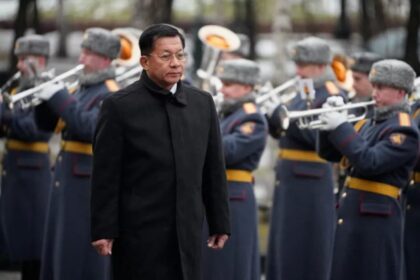A sudden clampdown in Ordos
China ordered 15 coal mines in Ordos, Inner Mongolia, to halt operations after investigators found output had exceeded licensed levels by about 10 percent. The decision, led by the Inner Mongolia Autonomous Region Energy Bureau, surprised traders who were expecting steady supply from one of the country’s core coal hubs. The mines remain shut while authorities review production records and compliance, a move that signals tighter enforcement in a sector that underpins China’s electricity and heavy industry.
- A sudden clampdown in Ordos
- Why tighten coal output now
- The paradox of building new coal plants while curbing mines
- What the closures mean for prices, steel, and supply chains
- Inspection regimes and closure standards
- A broader shift to critical minerals control
- Lessons for coal dependent regions
- Signals to watch in the months ahead
- What to Know
The closures are not an isolated safety response. In the summer, the National Energy Administration asked coal producing provinces to audit output and report any breaches of licensed capacity. The aim is to keep production within approved limits and prevent the kind of overcapacity that can crush prices, strain local finances, and compromise safe operations. Mining companies that run hot during price dips risk triggering deeper slumps, so Beijing is moving to reset discipline before the winter demand season.
Coal remains integral in China, supplying roughly half of its electricity and feeding the blast furnaces that make steel and cement. Managing that system requires more than building new power stations or turbines. It requires fine control of the fuel supply. That is the context for a clampdown that, at first glance, looked routine but in practice fits a broader strategy that reaches beyond Ordos.
Why tighten coal output now
The market backdrop in 2025 explains the timing. Production rose year over year by about 5.4 percent in the first half, a pace that brought oversupply and falling prices. The National Energy Administration responded by targeting mines that exceeded 110 percent of licensed capacity across eight major coal provinces that together account for the vast majority of national output. By September, monthly production edged down 1.8 percent from a year earlier to about 411.51 million tonnes, even though the first nine months were still up roughly 2 percent because of the strong start to the year. Enforcement tools included temporary suspensions, quota reductions, and in some cases permanent closures, backed by tighter monitoring.
The logic is to stop a race to the bottom. Coal markets are prone to boom and bust cycles. When prices slip, some producers try to run faster to spread fixed costs, which often deepens the price slide. Setting firm lines on capacity can help stabilize prices at levels that support safe operations, payrolls, and provincial tax bases. A steadier market encourages investment in better equipment and cleaner processes and reduces the temptation to cut corners.
China has used this approach before in steel, aluminum, cement, and other heavy industries. The anti overcapacity campaign is meant to raise the quality of supply and retire the least efficient or riskiest operations. Coal’s role in energy security means officials are careful to calibrate the pressure, but the direction of travel is the same: tighter compliance, data driven oversight, and more predictable production.
The paradox of building new coal plants while curbing mines
At the same time that mines face stricter output limits, construction of coal power plants accelerated last year. Research by the Centre for Research on Energy and Clean Air and Global Energy Monitor found that builders started about 94.5 gigawatts of new coal capacity in 2024 and restarted another 3.3 gigawatts of suspended projects. Approvals rebounded late in the year. Many of these units will connect to the grid over the next few years, boosting available capacity even if actual generation does not rise at the same pace.
This looks contradictory on the surface. It reflects a focus on reliability and regional economics. Heat waves, droughts that hit hydropower, and fast growing industrial loads have pushed system planners to secure more firm capacity that can respond on demand. Coal generators still produced about 51 percent of China’s electricity by June 2025, down from 66 percent in 2015, yet absolute volumes remain large. New units can run at low utilization and still serve as insurance against blackouts, especially in provinces where industrial clusters rely on steady power.
The power market structure also matters. Long contracts and dispatch rules in many regions prioritize coal plants over renewables. That limits how quickly wind and solar can replace coal in practice, even as China installs record amounts of clean capacity. By 2024, solar and wind together approached the terawatt mark in nameplate capacity, yet grid and market reforms have to keep pace for that capacity to deliver more hours of actual generation. Within this setup, restraining mine output helps contain fuel costs while the system adds backup plants and expands renewables.
Several analyses expect China to approach peak coal consumption around 2025. A plateau is compatible with new plant construction if the fleet is used more flexibly and older units retire over time. Discipline on mine output supports that path by damping price volatility and guiding investment toward efficient, cleaner assets.
What the closures mean for prices, steel, and supply chains
Lower domestic output from a core basin like Ordos usually supports coal prices inside China. Traders turn to seaborne markets to cover gaps, drawing from Mongolia overland and from Indonesia, Australia, and Russia by sea. China imported a record 542.7 million tonnes of coal in 2024. When domestic growth cools, import demand can hold up or rise, which often firms regional benchmark prices and shifts trade flows in Asia.
The effects reach beyond power generation. Steelmaking depends on coking coal, a different grade than most power coal, yet prices across coal grades can move together when logistics and investor sentiment align. Higher fuel costs can lift steel prices, which pass through into autos, appliances, machinery, and construction materials. Cement producers, glass makers, and chemical plants face similar cost dynamics.
The United States has reduced coal’s share in electricity, yet still relies on metallurgical coal for steel and participates in global coal trade. Shifts in China’s policy can move global reference prices that influence American and European manufacturers through steel and other energy intensive materials. That is why the Ordos shutdowns are watched closely in commodity hubs, not just in Beijing and Hohhot.
Inspection regimes and closure standards
Shutting a mine is more than flipping a switch. Closure and aftercare require plans for land stability, water treatment, waste management, and community transition. Best practice guidance compiled with support from the World Bank recommends preparing five to ten years in advance, setting clear budgets, and maintaining monitoring after production stops. That planning reduces environmental risks and helps communities adapt.
China’s current enforcement cycle is tougher than earlier rounds. Penalties for exceeding capacity are clearer, and real time monitoring of output makes it harder to stretch licenses. That improves safety, supports fair competition, and reduces the chance of abrupt, unmanaged closures that leave sites hazardous and communities in limbo.
There is also a clear opportunity on idle land. Global Energy Monitor’s analysis suggests that turning closed or soon to close coal mines into solar farms could deliver nearly 300 gigawatts of renewable capacity worldwide. China already leads this coal to solar shift, with about 90 projects in operation totaling roughly 14 gigawatts and dozens more in development. Repurposing mine lands can create local jobs in construction and maintenance, reuse grid interconnections and substations, and support land restoration.
A broader shift to critical minerals control
Coal is not the only resource seeing tighter rules. China has moved to centralize and strengthen oversight of lithium, a strategic mineral for batteries. A revised Mineral Resources Law took effect on July 1, placing registrations and approvals under the Ministry of Natural Resources. In the lithium hub of Yichun, operators have been told to resubmit reserve and grade documentation, and several mines and refineries have curtailed production pending compliance reviews. The goal is to close permitting gaps, improve environmental performance, and remove risky capacity.
Policy shifts triggered a spike in lithium carbonate prices in late June, followed by a correction after exchange limits curbed speculation. Analysts estimate that licensing risk touches a significant share of China’s lithium output and could affect a sizable portion of global supply by 2026 if changes are abrupt. Signals from Beijing point to gradual restructuring so that battery makers and electric vehicle buyers are not hit with sudden cost spikes. That approach mirrors the coal strategy: calm volatile markets, steer capital toward higher quality resources, and safeguard long term supply.
Together, coal discipline and critical minerals reform reveal a consistent method. The state leans on audits, quotas, and licensing to reduce destructive competition and to direct investment. The near term result is slightly tighter supply and firmer prices. The longer arc is a system that supports new energy growth without destabilizing the old one.
Lessons for coal dependent regions
Experience abroad shows why planning matters. In Poland, abrupt mine closures during the 1990s transition left lasting scars in communities that had relied on company housing, social services, and steady wages. Even as the country moves to close its remaining pits over the next decade, social and economic challenges linger where support and retraining did not arrive in time. A just transition needs clear timelines, retraining programs, and credible redevelopment plans before the last shift ends.
For China’s coal provinces, diversification and land reuse will be as important as compliance. Inner Mongolia, Shanxi, and Shaanxi can expand renewable generation, grid services, and clean industrial projects on or near existing mine sites. Programs that help workers shift into construction, grid operations, and clean manufacturing can preserve local skills and stabilize tax bases. International partnerships and domestic funds that support worker training and site conversion can shorten the gap between closure and new opportunity.
Signals to watch in the months ahead
Policy cadence will set the tone. Look for National Energy Administration updates on capacity compliance, provincial notices on quota adjustments, and official statements on mine reopenings after investigations in Ordos. Monthly data on coal output, rail shipments, and port throughput will show whether the shift from growth to contraction persists through winter peaks.
The power sector’s balance will be just as telling. Track approvals for new coal generators, operating hours of existing units, and curtailment rates for wind and solar. Grid upgrades and market reforms that enable more flexible dispatch can raise renewable shares without risking outages. On critical minerals, licensing decisions in Jiangxi and Qinghai and the pace of reviews in other strategic materials will shape battery costs, electric vehicle pricing, and export dynamics.
What to Know
- Fifteen mines in Ordos, Inner Mongolia, were shut after exceeding licensed output by roughly 10 percent, pending investigations.
- The National Energy Administration ordered broad audits, targeting mines running above 110 percent of approved capacity in key producing provinces.
- Coal production rose about 5.4 percent year over year in the first half of 2025, then fell 1.8 percent year over year in September as curbs took hold.
- China started building about 94.5 gigawatts of new coal power capacity in 2024 and restarted 3.3 gigawatts, the highest construction start level in a decade.
- Coal supplied about 51 percent of China’s electricity by June 2025, down from 66 percent in 2015, while wind and solar capacity hit new records.
- China imported a record 542.7 million tonnes of coal in 2024, so domestic output shifts can influence regional seaborne prices and trade flows.
- Best practice mine closure requires plans five to ten years ahead; China’s stricter inspections aim to reduce environmental and safety risks.
- Turning closed mines into solar sites could yield nearly 300 gigawatts globally; China already has about 14 gigawatts in coal to solar conversions.
- A revised Mineral Resources Law centralizes lithium licensing, with reviews in Yichun and elsewhere aimed at tightening compliance and guiding investment.
- Analysts expect China to approach peak coal around 2025, with policy focused on price stability, energy security, and a managed transition.












